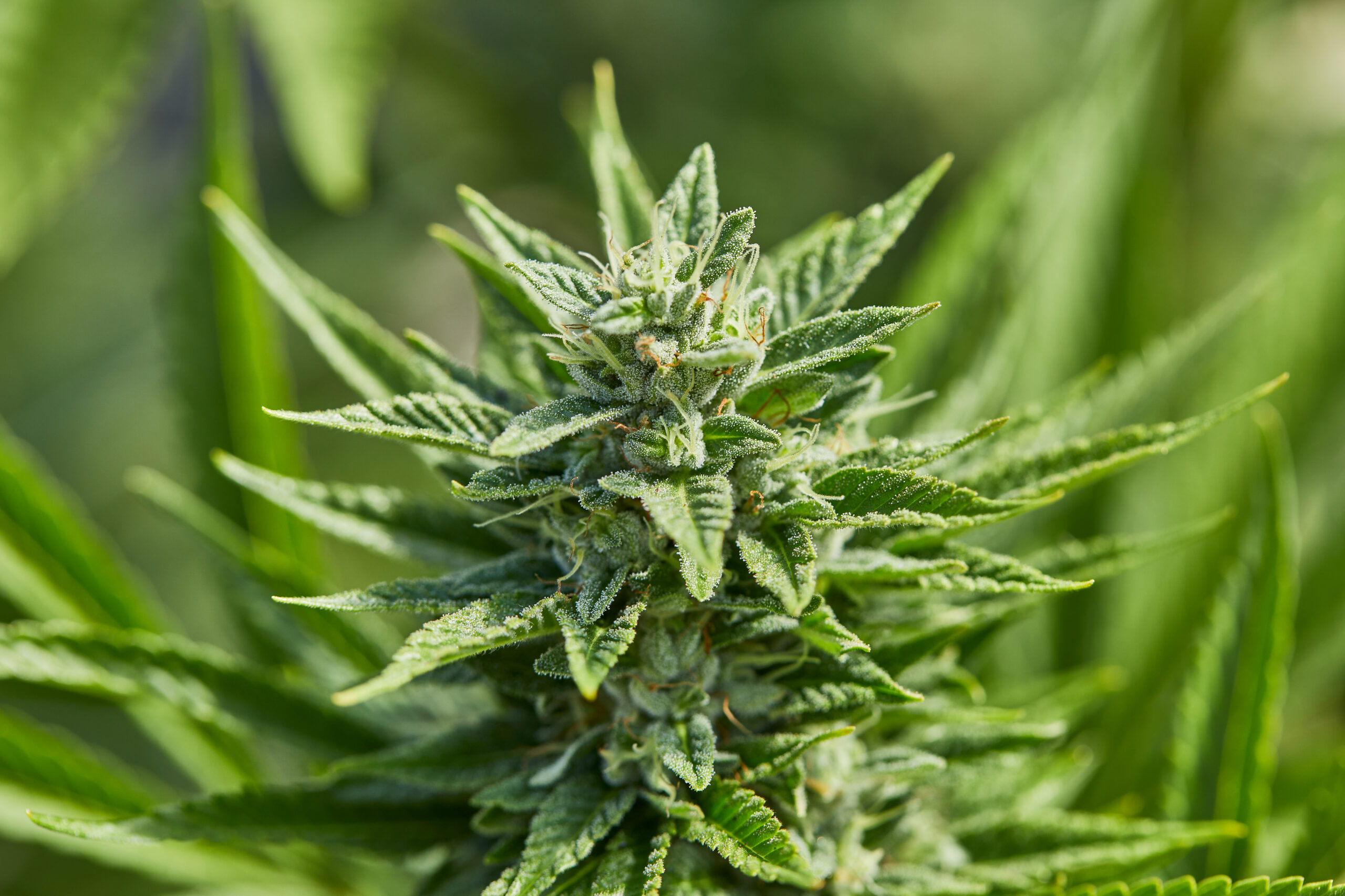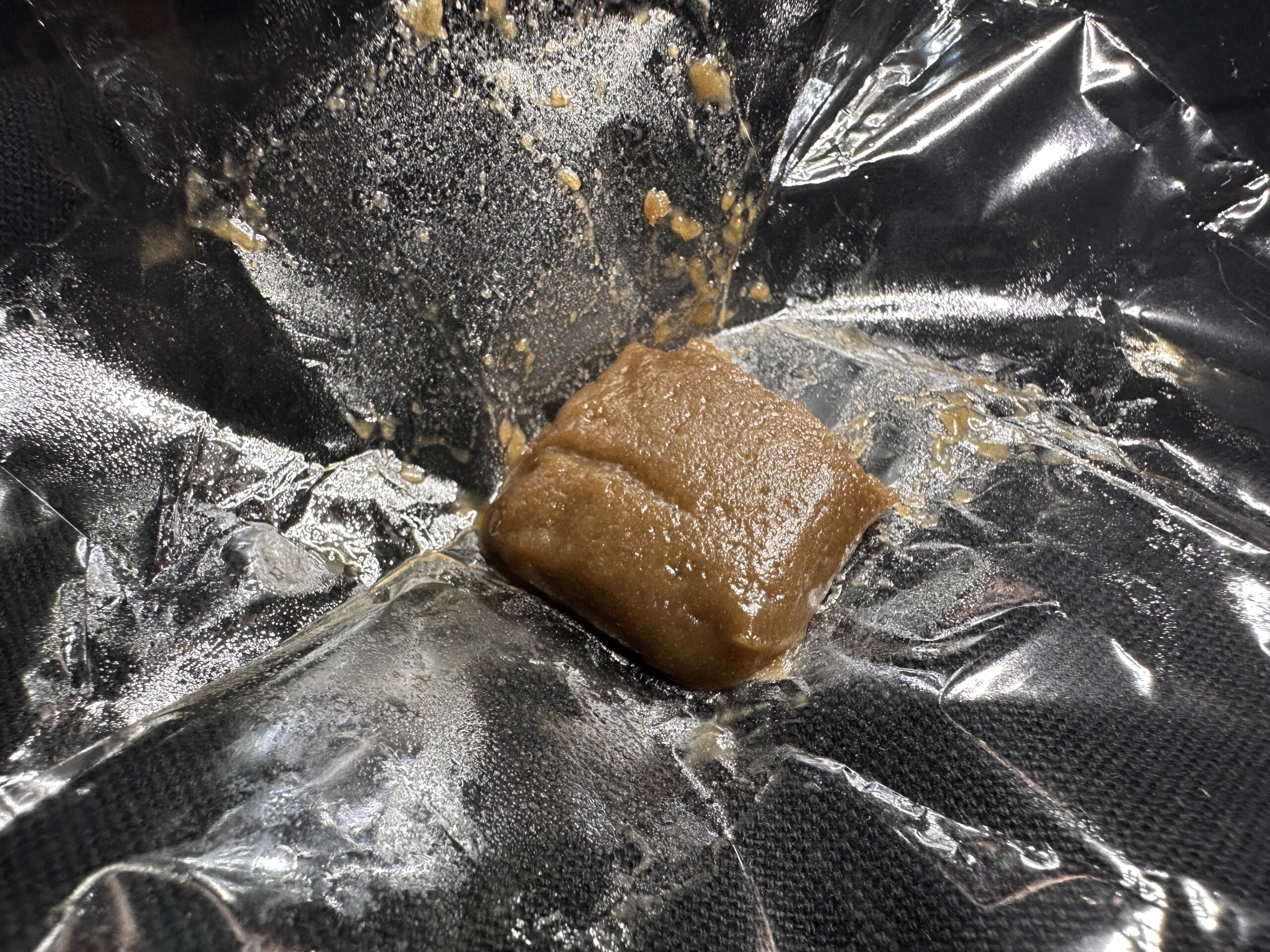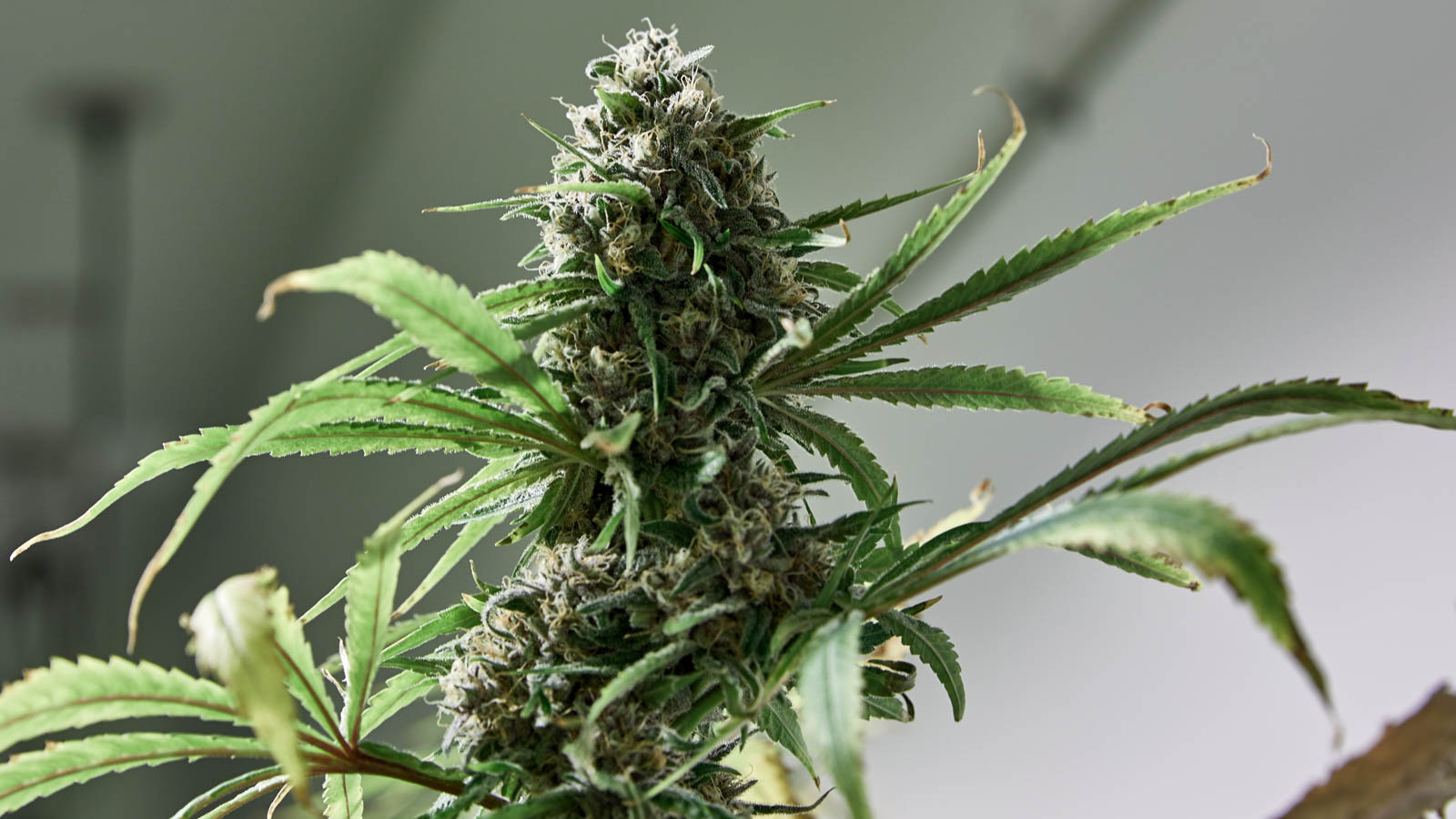Shopping for good weed is like shopping for good produce. Flower should look and smell fresh. But there are other characteristics to keep in mind to ensure you're getting the best nugs for your money.
Learn the difference between private reserve and top-shelf flower, how smell, appearance, and flower structure indicate quality weed, and why price isn't everything.
What's private reserve weed?
Cannabis usually comes in four categories in the regulated market: house or compassion shelf, mid-shelf, top shelf, and private reserve. Private reserve refers to the highest tier of cured cannabis flower available from a dispensary or delivery service.
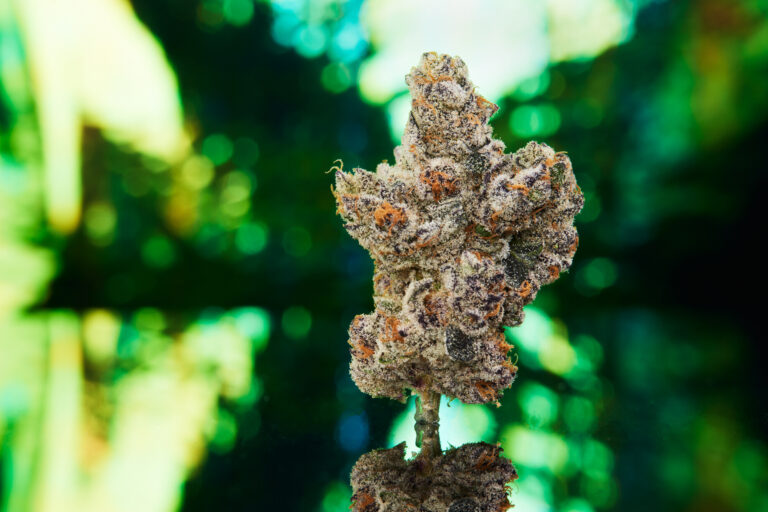 Photo by: Gina Coleman/Weedmaps
Photo by: Gina Coleman/WeedmapsImage lightbox

It typically has the following characteristics:
- Small batch: While all craft cannabis is dried and cured for optimal usability and quality, private reserve flowers are specially cared for to preserve their terpene and cannabinoid content. Cultivators set aside small batches of flower that exhibit qualities such as vibrant color, pungent aroma, and unique bud structure.
- High prices: Each tiered cannabis shelf has a different price range, and customers can expect to pay a premium price for premium buds. Private reserve strains are known for their exclusivity and can include rare, popular, and award-winning strains by celebrated cultivators. For these strains, expect to pay $100 or more for an eighth ounce (3.5 grams) in legal markets.
- Perfection: To be considered private reserve, cannabis must have a dense coating of trichomes, bright or deep colors, and the perfect amount of give when pinched. Its moisture content should be at an optimal level for an even smoking experience and to discourage the growth of mold or mildew.
- Diverse cannabinoid profile: All cannabis sold in licensed dispensaries is lab tested, and lab results for private reserve strains should show various cannabinoid and terpene profiles. Judging weed on potency alone can be a mistake. While recreational consumers with high tolerances may look for a private reserve with the highest THC content, medicinal users and consumers with lower tolerances may prefer flowers with high levels of CBD or other therapeutic cannabinoids.
When shopping for cannabis, ensure the flower you're procuring is up to par with its shelf designation. A jeweler's loupe is a cannabis aficionado's friend when choosing which buds to buy. If ordering delivery, read reviews of strains labeled “Private Reserve” before purchasing.
What is top-shelf weed?
Top-shelf is slang for a high-quality cannabis product that is often the most expensive on a menu. Regarding cannabis flower, top-shelf weed will exhibit an aesthetically pleasing appearance, demonstrate desirable terpene aromas and flavors, and have a high cannabinoid content.
Several factors go into creating premium cannabis, as any professional grower will tell you. Here are the common top-shelf grade cannabis components:
- Genes: Selective breeding over decades has made some strains better than others when it comes to terpene and cannabinoid content.
- Healthy soil: Good soil with plenty of microbes supports top-shelf results.
- Proper nutrition: Like any plant, cannabis needs the right nutrients — mainly nitrogen, phosphorus, and potassium — at the right time to produce stellar results.
- Drying and curing: Proper handling of nugs after harvest preserves the trichomes, the small and delicate glands on the cannabis plant where cannabinoids, terpenes, and other beneficial phytochemicals are produced. Genetically superior cannabis tastes, smells, and smokes better.
Top-shelf weed is sometimes called “loud weed” for its potent fragrance and high quality. It also has other synonyms, including “high-grade” and “fire.”
What is low-grade weed?
Schwag, or low-quality cannabis, is characterized by its dull appearance, dusty aroma, low potency, and overall subpar quality. A host of other weed slang terms, including dirt weed, skunk weed, catnip, brown weed, or ditch weed, also refer to low-quality cannabis.
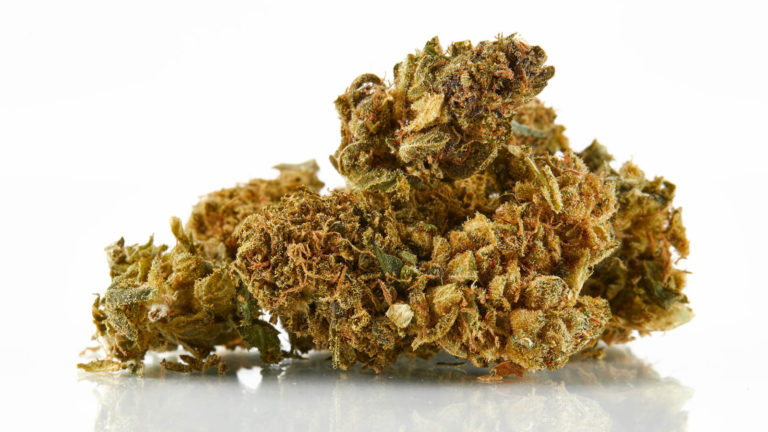 Photo by: Gina Coleman/Weedmaps
Photo by: Gina Coleman/WeedmapsImage lightbox

Depending on how bad the weed is, it might be unsafe to smoke, especially if it's moldy or contains pesticides. Low-grade weed is also usually dried out or smells weak.
What to look for in good weed
Identifying high-quality flower can throw even the most experienced cannabis connoisseurs for a loop, but the key traits that separate good weed from bad weed are smell, look, feel, and flower structure.
Smell
Cannabis cultivated and cured to the highest standards typically exhibits a pungent and pleasant aroma. Flowers emitting a strong fragrance are commonly referred to as having a “dank” or “loud” odor, indicating the overall quality of the flower.
There are a variety of terms for the types of aromas high-quality cannabis emits, including skunk, diesel, and pine. The common denominator is that good-smelling flower is distinct, pungent, and unmistakable. The stronger the fragrance, the more nuanced the experience will likely be.
Look
High-end flower provides a few visual hints to help you determine its quality. While all good cannabis should be visually appealing, a top-shelf strain can easily display vibrant colors. Good-quality flowers are often a deep green with flaming orange or red hairs. They can also express colors from deep purple to bright blue.
Another important visual indicator of good weed is the amount and viability of trichomes. Trichomes are the tiny, glimmering crystal-like appendages on the plant's surface that create and hold the compounds responsible for the flower's smell, flavor, and effects.
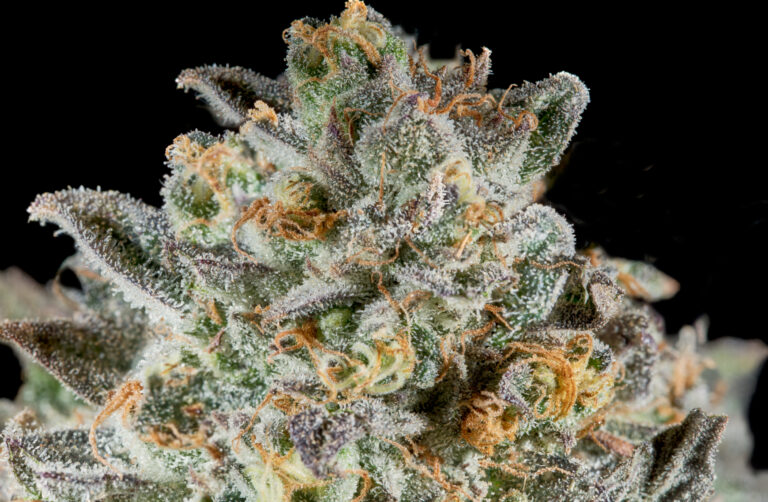 Photo by: Gina Coleman/Weedmaps
Photo by: Gina Coleman/WeedmapsImage lightbox

The more frosty trichomes you can see with the naked eye, the better indicator of the flower's intoxicating and therapeutic potency. If your eyesight has seen better days or you want to get up close, use a magnifying glass to get an even better sense of a nug's trichomes.
Feel
Top-shelf flower should be sticky and slightly spongy when touched or gently squeezed between your fingers. Stems should snap, and the bud should be relatively easy to break apart but not completely dried out. Alternatively, buds shouldn't be too wet or soft since they have a higher chance of developing or containing mold or mildew.
Flower structure
Skillfully cultivated and cured sativa-leaning flowers tend to be light and fluffy in shape and composition, while indicas tend to be tighter and denser in flower structure. The structure and experience you end up having usually have little to do with each other. Rock-hard flowers indicate that cultivators may have used plant growth regulators, which can lead to an unpleasant taste. Extremely fluffy flowers could signal that the plant was not grown under sufficient light intensity and was not cultivated to its potential.
Ideally, your nugs will be dense — but not too dense — and trimmed properly with excess leaves and stems removed.
Other qualities of good weed
To take your search up a notch, consider these other indicators of good weed:
- Ethical cultivation: Ethical cannabis cultivation involves environmentally sustainable growing practices, the fair treatment of employees and local communities, transparency in product information, vocalized support for equity and inclusion in the industry, and advocacy for sensible policies, like drug reforms. Cannabis companies that foster an equitable, sustainable industry will often make those efforts clear in their packaging and branding. Clean Green Certified also maintains a list of cannabis brands that use organic cultivation methods.
- Certificate of Analysis: A Certificate of Analysis (COA) is a document issued by an internal quality assurance team or third-party analytical testing lab that confirms the product has passed inspection and meets regulatory standards. A certificate of analysis often includes information about cannabinoids, terpenes, heavy metals, pesticides, microbes, mycotoxins, moisture content, water activity, residual solvents, and foreign materials.
How to tell if weed is bad
Low-quality weed, or schwag, tends to have a few common characteristics that make it fairly easy to identify.
Color
Schwag tends to be dull brownish-green in color. It lacks the richness and vibrant tones of higher-quality flowers.
Texture
Schwag is known to be poorly harvested and cured and tends to be dry and crumbly. Bad weed lacks any moisture, stickiness, and bounce you'll see in high-quality buds.
Loose plant material
In addition to small buds, schwag often contains other plant material like loose seeds, stems, and leaves.
Lack of trichomes
Poor harvesting, handling, and drying techniques lead to the degradation of trichomes. A lack of trichomes is one of the reasons schwag tends to have lower potency. Unlike higher-quality buds with a frosty, white appearance due to a rich coat of trichomes, schwag will often be dull and flat.
Smell
Schwag lacks the aromatic complexity of better-quality cannabis, and it's often described as smelling like compost or dirt. Since trichomes are lacking with schwag weed, so are the aromatic terpenes that give cannabis its distinctive and appealing aromas.
Smoke
Schwag is known to be poor in flavor and smokeability and is often described as having a harsh inhale.
Bottom line
Top-shelf weed means high-quality, cannabinoid- and terpene-rich cannabis produced without chemical pesticides or fertilizers. Many dispensaries offer a variety of weed grades, and you can usually find an array at your local pot shop.
FAQ
How hard is it to grow top-shelf weed?
The fact that top-shelf commands top prices points to its rarity. If it were easy, all weed would be top-shelf. Growers choose quality genetics, carefully monitor nutrients, light, water, and other inputs throughout the growing cycle, harvest at the right time, and then take the utmost care in curing, drying, packaging, and transporting to deliver the best cannabis.
Is exotic weed the same as top-shelf weed?
Exotic weed may just be rare or from an exotic location and not necessarily top-shelf. Beautiful cannabis may not deliver the taste and aroma that makes it rise to a premium level.
Is any single strain considered top shelf?
Some strains are bred to be premium cannabis, but genetics are just the beginning. Even high-quality genetics can be wrecked by poor soil, the wrong nutrients, or careless curing and drying.
Smell, appearance, and feel determine quality, not the name of the strain.
Should I avoid schwag?
Whether or not you should avoid schwag is a personal choice. While many would pass on schwag because it's expected to be poor quality, there are cannabis lovers out there who appreciate its lower potency. Schwag is also a more affordable option. Some people buy schwag, trim, and shake not to smoke but to make edibles, oils, and tinctures.
Your decision might also be influenced by how much you can learn about who grew it and how it was grown. Like any cannabis flower, it may have been treated with extensive pesticides or fungicides. Improper drying and curing can also lead to mold, fungus, or microbial contamination. Follow your senses and examine it carefully; if the schwag contains mold or smells offensive, it could be unsafe to consume.
Is high THC a sign of good weed?
Not necessarily. Like everything else about enjoying cannabis, the level of THC in your weed is a matter of preference. Some people prefer the experience of strains with less THC or more balanced THC-to-CBD ratios.
For example, a popular high-CBD strain, Harlequin, could be considered private reserve, especially when grown with care and cured just as carefully. Additionally, high-end hemp can be considered private reserve. The flavor, aroma, and bud structure lead to a coveted spot on weed's highest shelf. A better indication of quality is a complex aroma, a springy texture, and lots of frosty trichomes despite the THC content.


